Email marketing is a vast ocean of opportunity.
There are a lot of different tips, tactics, and hacks out there for getting the most out of your email marketing efforts.
You can personalize your email campaigns. You can leverage tried-and-tested subject lines for getting higher open rates. You can even ethically swipe sales copy from certain online resources.
But what about… the basics?
We know that mastering the basics of email marketing isn’t as exciting or flashy as learning the most recent tricks or hacks, but in many ways, basic mastery is far more powerful.
And in this article, we’re going to walk through 12 different types of emails that every marketer should master.
But first…
What are the different types of emails?
If you’re new to email marketing, then you might be thinking to yourself, “There are different types of emails? What do you mean? Isn’t there just… well, emails?”
The fact is, email marketing is just as versatile as any other messaging platform — sometimes more so. And because of that versatility, there are a lot of different ways to interact with one’s subscribers.
You can try to sell your products, you can offer special discounts, you can remind people about a product that they left in their cart, you can provide free value to build trust and authority, you can send purchase receipts, ask for feedback, and so much more.
The below list of 12 different email types isn’t even exhaustive — somewhere, there’s an email marketer who’s sending something that doesn’t fit within any of these categories.
But this list does cover the basics, and that’s what matters most.
So let’s talk about the 12 different types of emails that every marketer should master.
1. The Welcome Email

If you invite a new friend over to your house, let them in without a word, and go sit on the couch to watch TV, how uncomfortable do you think that person is going to feel? Do you think they’re ever going to come back to your house again?
Probably not.
That’s an extreme metaphor, but it illustrates how it can feel for new people on your email list if you don’t welcome them and explain how things work — they can feel a little out-of-place and unwelcome.
To master the welcome email, here are some best practices to consider.
Welcome Email Best Practices
Thank The New Subscriber — When someone signs up for your email list, that means they are taking a risk and trusting you with their personal information. It’s good practice to thank the new subscriber for that trust and to make sure they know that you don’t take it lightly.

Tell Them What To Expect — A good welcome email tells the subscriber what they should expect now that they’ve joined your list. How often are you going to email? What kind of things will they receive that other people won’t receive? Why will being on your list benefit them? And is there anything they need to do right now in order to get the most out of being a subscriber? Those are all questions you should answer in the welcome email.
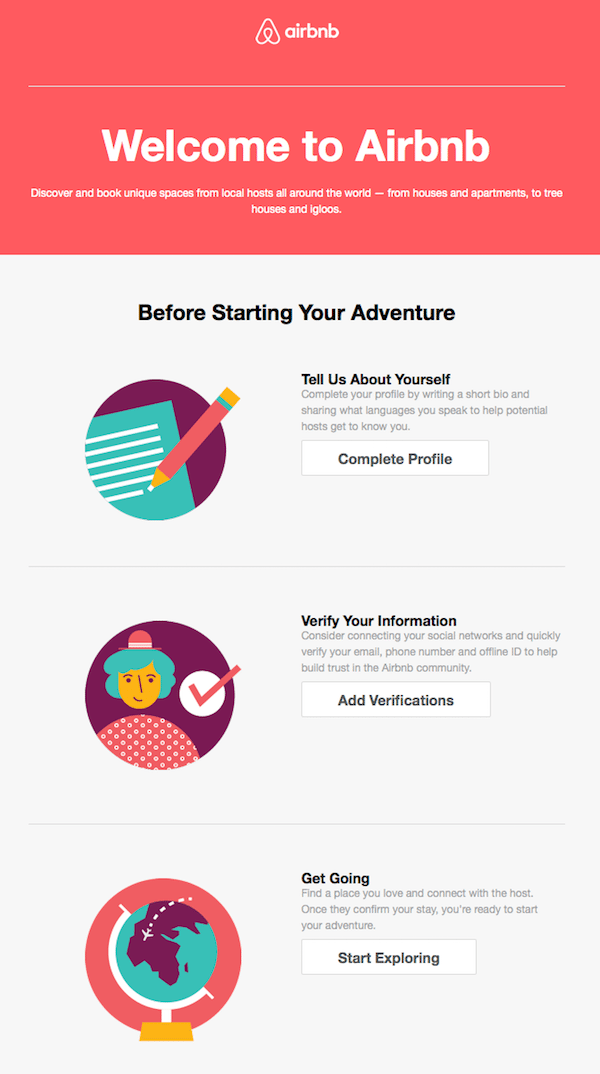
Introduce Your Brand — The sooner that you introduce your subscribers to your brand, the better. At the very least, make sure that the fonts, images, colors, and logos in your welcome email are all on-brand and what they should expect to see from future emails. Even better, you can include your mission statement or core values to tell your audience what you stand for and believe in.

2. The Value-Driven Newsletter
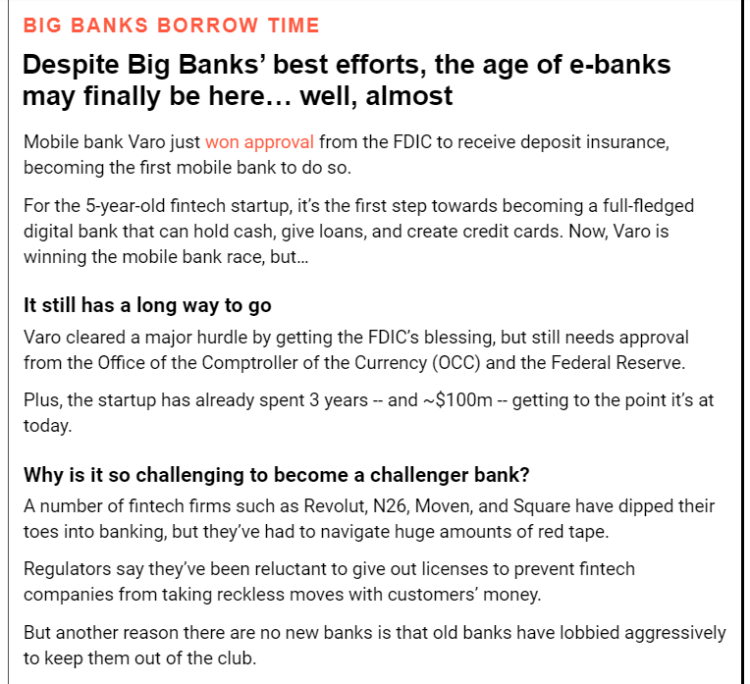
Why do people buy books or magazines? Why do they read online blog articles?
Because, for one reason or another, they enjoy the content. Maybe it entertains them, maybe it teaches them something that they want to learn, or maybe it inspires or encourages them.
Whatever the case, whenever someone reads something (or consumes any sort of content, for that matter), it’s because they think it’s valuable.
And a newsletter is a weekly, monthly, or sometimes daily email that provides your target market with free value — whether that’s entertainment, education, or inspiration.
Creating a consistent newsletter cadence is one of the best ways to build a long-term relationship with your audience. Below are some best practices.
Newsletter Best Practices
Provide Free Value Often — The success of your newsletter depends on each email providing immense value in the form of entertainment, education, or inspiration. After your audience reads it, they should feel like they’ve been given some sort of free value. The more that you do this, the more that your audience will want to buy from you once you ask them to purchase.

Make Use of The Holidays — The holidays, birthdays, and anniversaries are a great excuse to send your audience a newsletter email with updates, special offers, or entertaining content.
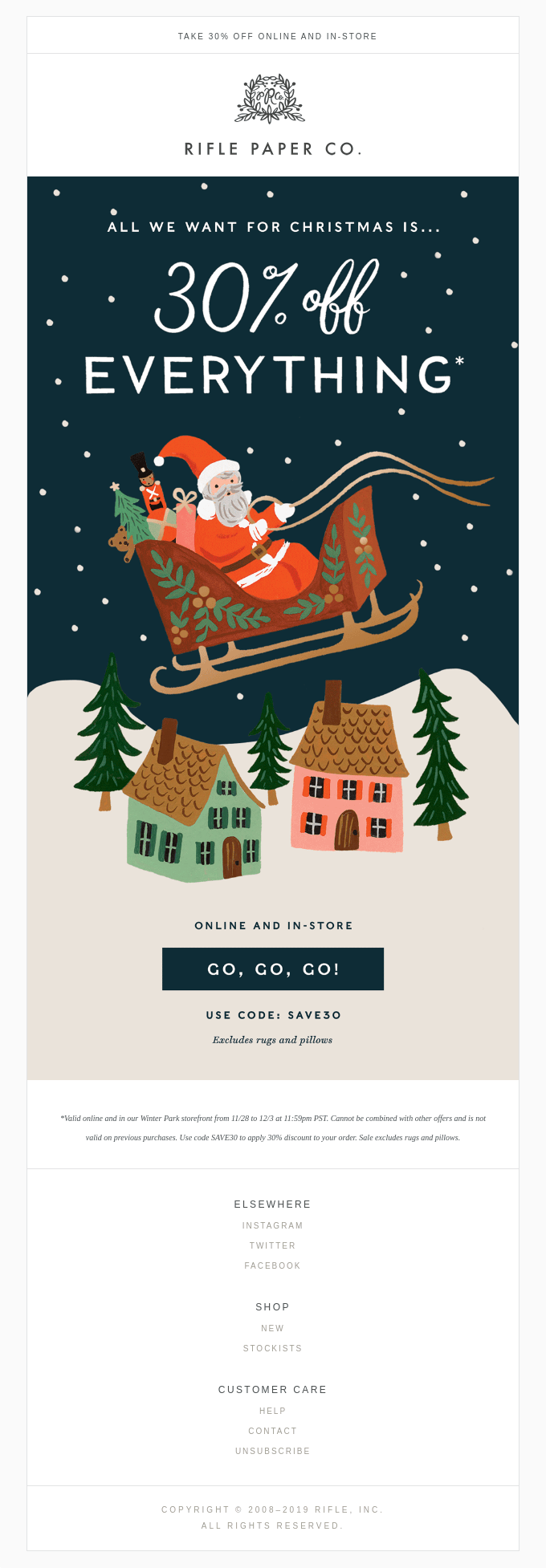
Consider “News-Jacking” — Not sure what to talk about in your newsletter? Well, you might consider turning to the news or Google trends to see what’s going on. Ask yourself, “What’s going on in the news right now that my target market probably cares about?” and then talk about that in your newsletter. This can be a great way to build a relationship with your audience by showing them that your brand has similar viewpoints as them on important matters.

3. The Abandoned Cart Email
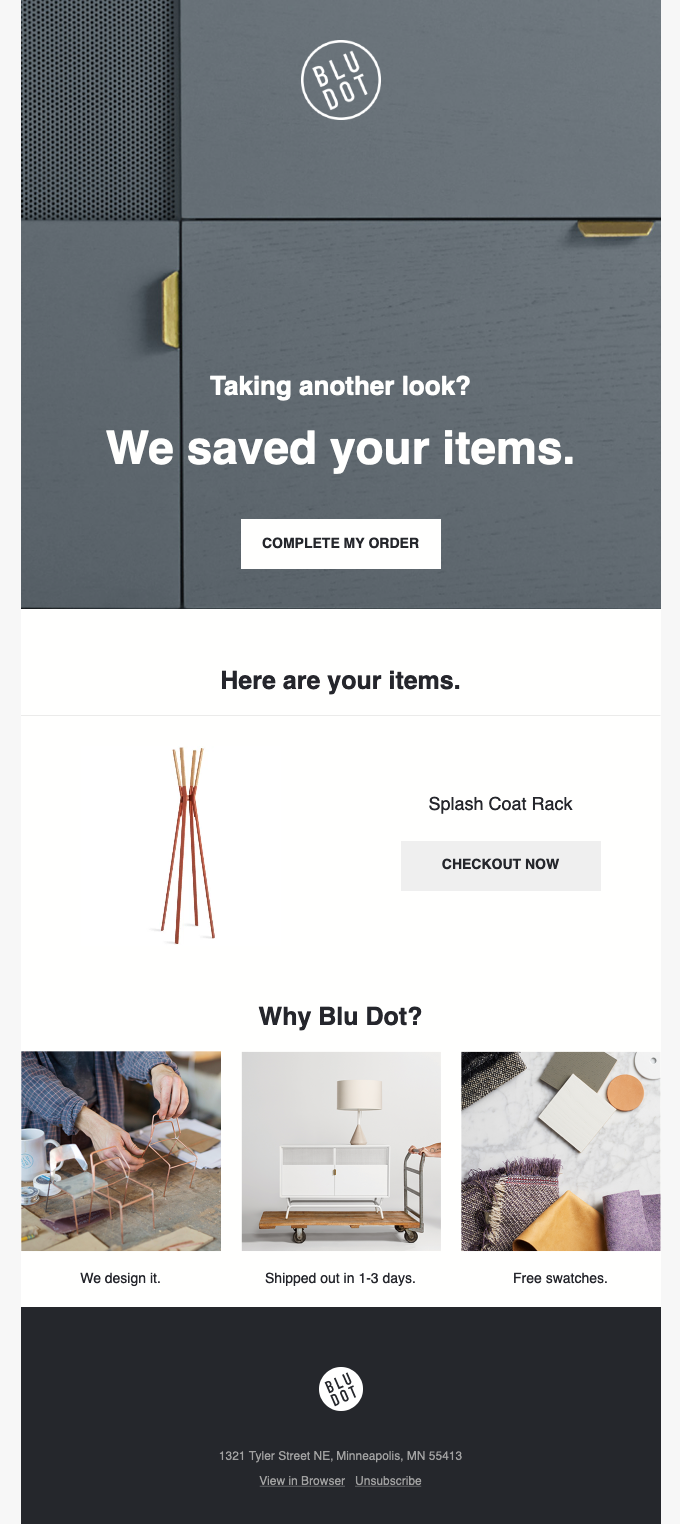
By this point, every ecommerce store should know the importance of having an abandoned cart email. Just consider that about 69% of all online shopping carts get abandoned. Fortunately, there’s an easy fix…
- 40% of cart abandonment emails get opened.
- 50% of opened emails get clicked.
- And 50% of customers who click purchase.
In other words, setting up an automatically triggered cart abandonment email campaign is an easy way to increase your conversion rate and make more sales.
Here are some best practices…
Cart Abandonment Email Best Practices
Mention One Specific Product — Don’t forget to mention the specific product(s) that the person had in their cart. Those are the things they are interested in buying, so it’d be a little silly to send a cart abandonment email without mentioning those products.
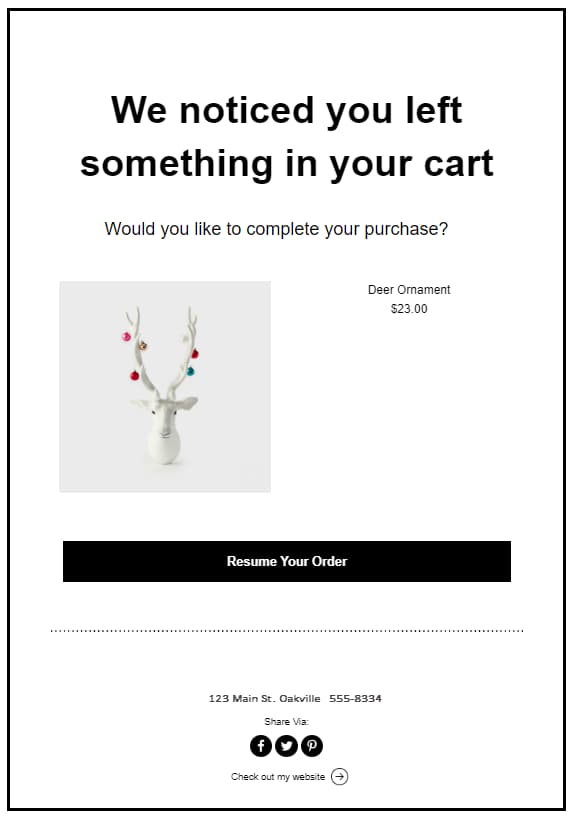
Offer a Timed Discount — Many consumers won’t say this outright, but one of the top reasons that people abandon their cart online is because… well, they can just purchase later (and lots of people are natural procrastinators). One great way to encourage those delayed buyers to purchase now rather than later is by offering a timed discount that goes away within 12 or 24 hours.
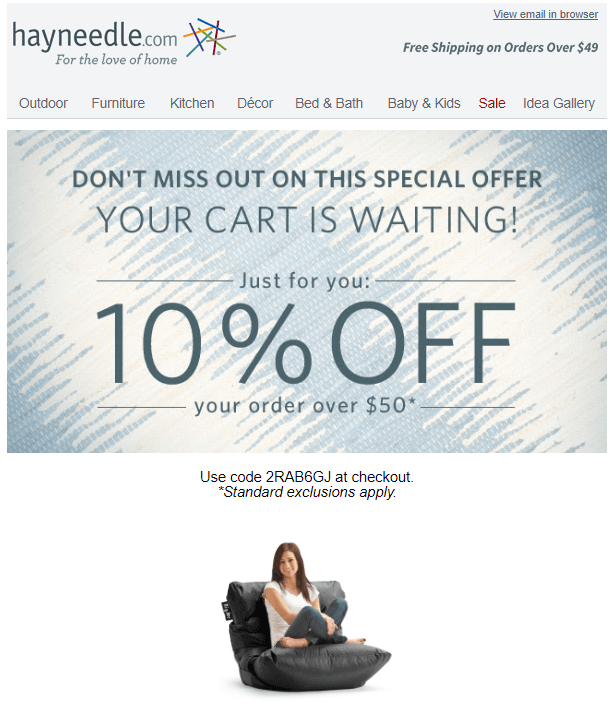
Add Some Other Products — Depending on the type of products you sell, it might be a good idea to include other product recommendations within your cart abandonment email. Some people abandoned because they simply lost interest in the product they had selected, so try adding some other options. Just keep an eye on your conversion rate to see what happens.
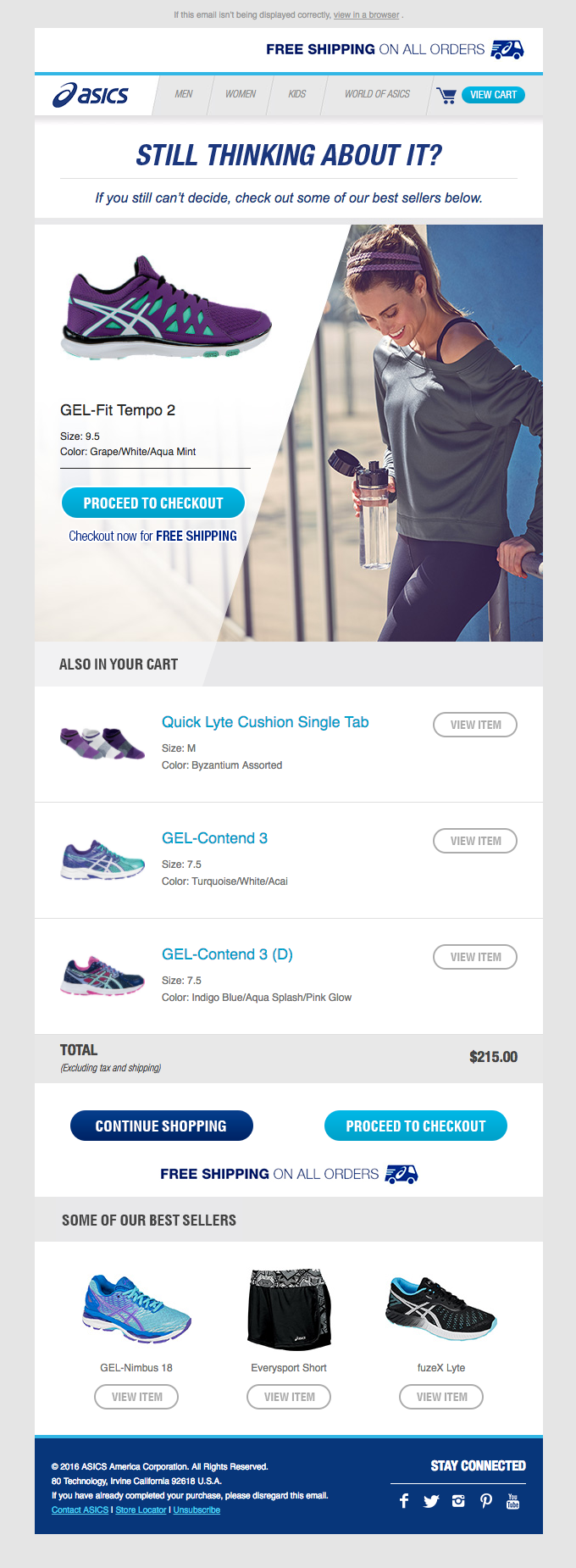
4. The Feedback Email

What if you could figure out exactly what your target market likes about your business… and what they don’t like?
How valuable would that be to the growth of your business? If you’ve been in the startup world for any significant amount of time, then you’re familiar with the undeniable power of early customer feedback.
And by sending a single email or adding it to your on-boarding sequence, you can automatically collect feedback from the people who matter most: paying customers. All you have to do is create a survey using a tool like Google Forms or Typeform, then send that survey to your target market.
Feedback Email Best Practices
Encourage Honest Feedback — Feedback from your target market isn’t all that valuable if it’s dishonest. You need to make sure that people feel comfortable giving you their honest opinion. To do that, just say something like, “Please answer honestly, as it allows us to provide with the best service possible.”

Tell Them How Long It’ll Take — People are more likely to take your survey if they know how long it’s going to take them. And they’re even more likely if it going to take them 60 seconds or less. So, create a quick survey and tell people what to expect.
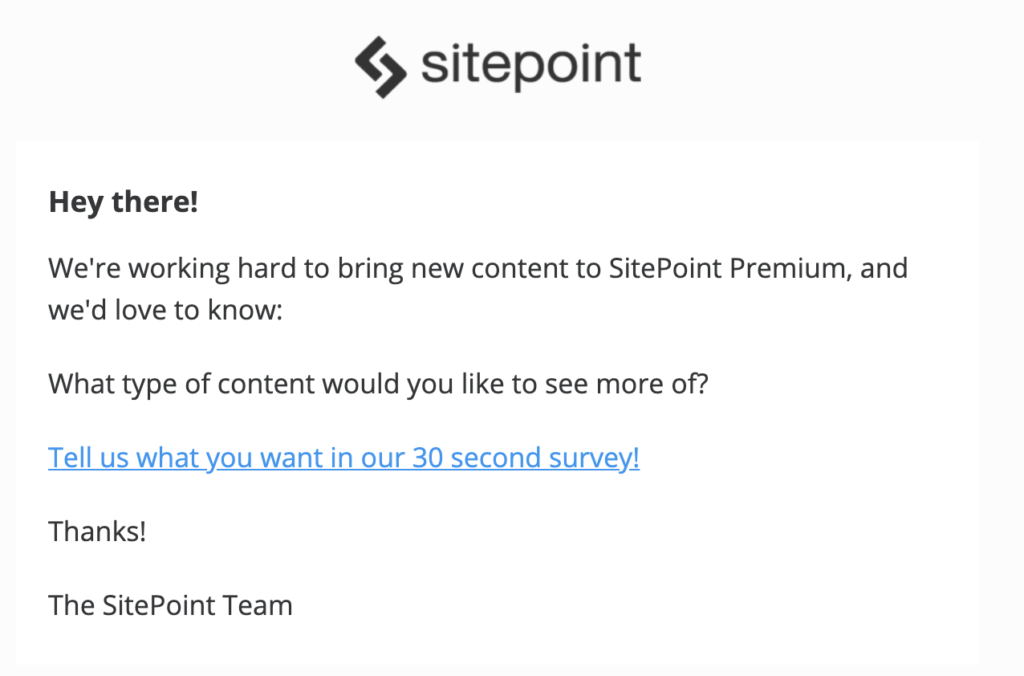
5. The Offer Email

One of the main goals of email marketing is to drive sales and generate revenue.
And to do that, you’ll sometimes want to make a special offer to your subscribers or to people who expressed some sort of interest in a product. These offers are usually timed (meaning they go away after 24 or 48 hours, for example) and they often include getting a percentage off a product if the prospect buys before the end-date.
Lots of ecommerce stores make use of these kinds of special offers and you might want to consider doing something similar.
The Offer Email Best Practices
Add Incentive — A special offer isn’t really special if there’s no unique incentive to buy. Usually, this is as simple as offering some sort of discount off the customer’s purchase. If you’re marketing for a SaaS company, then you might consider offering a free trial, a money-back guarantee or grandfathering people in at a lower monthly rate. Whatever you decide, the offer should be an incentive that isn’t always available.
Have a Good Reason — What’s your reason for sending a special offer to your audience? Is it because they did something that you appreciated? Is it because they gave you feedback on a survey? Is it because it’s a special holiday? Or is it because you just want to reward customers who buy a certain product within the next 24 hours? If you’re not careful, a special offer can make your audience think, “Well… what’s wrong with the product? Why is it on sale?” Having a reason for the sale ensures that people’s perceived value of your product or service doesn’t decrease.
![Promotional Emails: 33 Examples, Ideas, Best Practices [Updated 2019]](https://i0.wp.com/www.getvero.com/wp-content/uploads/2019/03/promotional-email-example-headspace.jpg?resize=1350%2C2204&ssl=1)
Use Urgency — Typically, the marketing goal for having a special offer is to make more sales immediately. And the best way to do that is by adding some urgency to your email. But this doesn’t have to be gimmicky; you can just tell your audience when the sale is coming down (“This will go away in 48 hours”, for instance) or you can limit the number of people who can take advantage of the deal (“This comes down after 10 people buy,” for example). Just make sure you stick to your guns. False urgency will hurt long-term trust with your customers.
![Promotional Emails: 33 Examples, Ideas, Best Practices [Updated 2019]](https://i1.wp.com/www.getvero.com/wp-content/uploads/2019/03/promotional-email-example-guardion.jpg?resize=1013%2C2013&ssl=1)
6. The Onboarding Drip Sequence
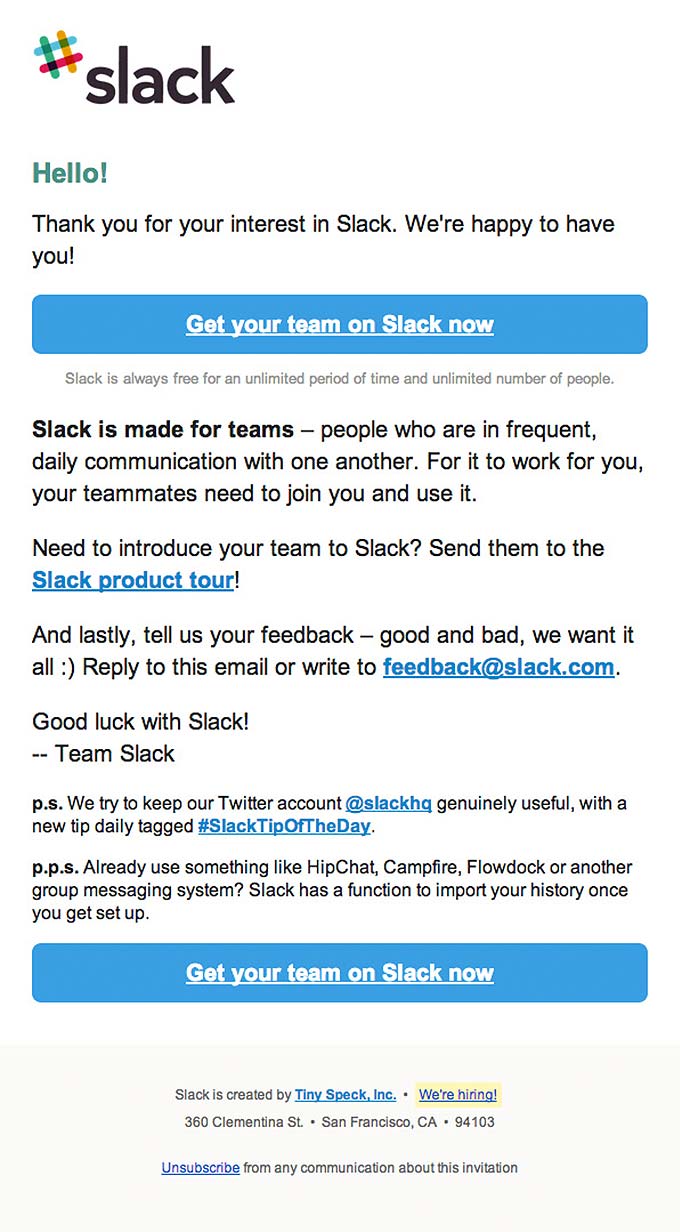
How do introduce new customers to your product or services?
And we’re not just talking about sending them a “Thank You” email or a receipt, we’re talking about showing them how to get the most out of your product or service, indoctrinating them with your brand, and even up-selling them.
The key here is to create an on-boarding sequence that does all three of those things automatically when someone buys one of your products.
Here are some general best practices when crafting your on-boarding sequence…
The Onboarding Sequence Best Practices
Don’t Upsell Right Away — We recommend putting the up-sell of your on-boarding sequence somewhere near the end. There are definitely some exceptions to this rule, but you just want to be careful of annoying your new customers with too many pitches at once.
Teach Them Something They Didn’t Know — One of the coolest things that you can do with your on-boarding sequence is teach your subscribers something they didn’t know about your product or service. You can tell them the story of how it was developed or you can show them how to use it in a new way.

Ask Them To Join Your Community — The on-boarding sequence is a great time to invite your new customers to join your community (your “inner circle”). Doing so will put them in more long-term contact with your brand and further indoctrinate them with your content and your community (which is a good thing).

Put Them Into Your Normal Newsletter — Once someone has received all of the emails from your on-boarding sequence, don’t throw the lead away! Extend the customer journey and add them to your weekly or monthly newsletter so that you can keep in contact with them. Remember, it’s way easier to sell to an existing customer than it is to a new customer.
7. The Transactional Email (With Upsell)
 You have to send transactional emails one way or another — so why not try and upsell more products right inside of those emails?
You have to send transactional emails one way or another — so why not try and upsell more products right inside of those emails?
This can be a great way to increase the amount of money customers spend every time that they purchase a product.
But beware… you don’t want to upsell too much or you might unintentionally irritate your customers and drive them to not purchase in the future.
Nike’s email marketing campaigns (which you can learn tons about over here) do a great job of encouraging their customers to always shop, browse, and buy.
And according to how some of the most successful brands use their transactional emails to upsell products and services, here are a few best practices to keep in mind…
The Transactional Email (With Upsell) Best Practices
Don’t Be Too Pushy — Remember that this person already spent money to buy one of your products just a few moments ago. The last thing you want to do is send them an upsell that sounds pushy or desperate. Instead, send them a transactional email with an upsell that’s non-invasive and genuinely helpful. Huckberry does this by showing you some of their products that are currently trending. This is a non-invasive way of saying, “Hey! Here are a few other things you might be interested in.”

Make Relevant Recommendations — The goal of putting an upsell or recommended products within your transactional emails is to increase the amount of money people spend every time they purchase from you. And to increase the chance that people purchase one of your upsell offers, try and make your offer or recommendation relevant to them or the item they just purchased.
If they just bought shoes, for instance, then you might offer them matching socks or a matching shirt. If they just bought a tennis racket, then you might offer them tennis shoes to match. Or you can just offer similar products based on their past purchases.
However you do it, personalize your upsell to each customer and they’ll be more likely to purchase.

8. The Sales Letter Lead
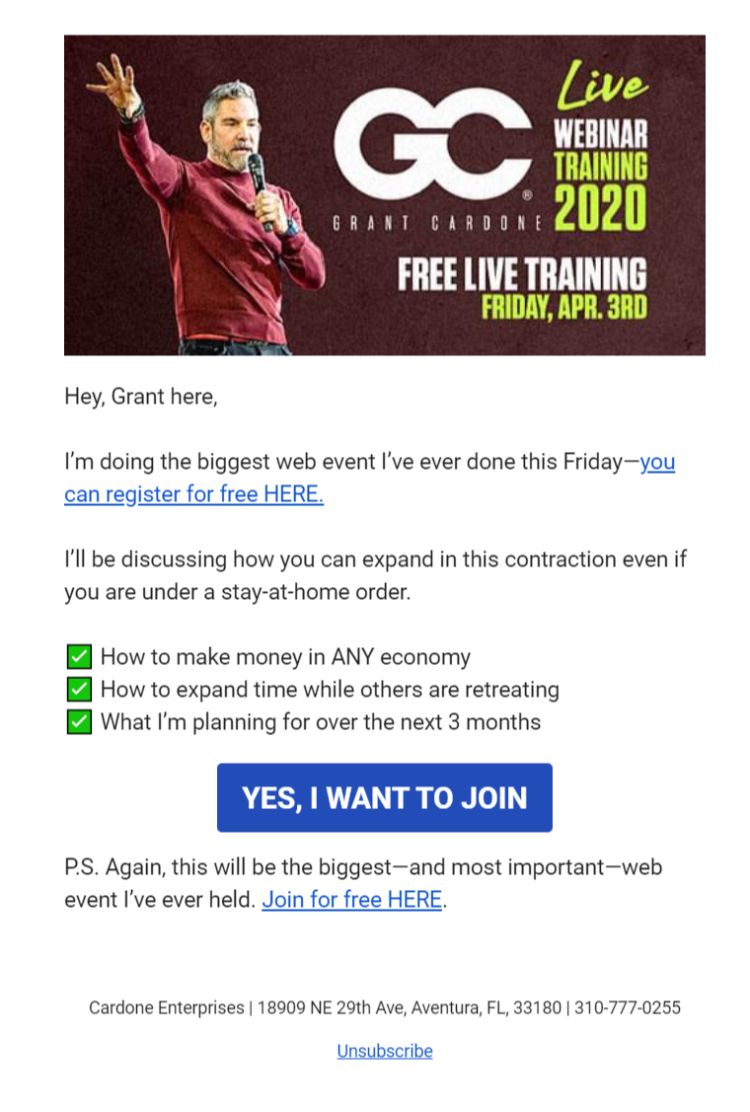
We see this type of email marketing campaign primarily from businesses or brands that are identified with a specific person. Grant Cardone, Gary Vaynerchuk, Tony Robbins, and Dean Graziosi are all entrepreneurs whose personal brands and businesses have merged into one thing.
The sales letter lead is an email campaign that is meant to drive people to a sales page for a product or service that your business is selling. This is slightly different from a basic promotional email in that the sales letter lead typically tells some sort of personal story that grabs the reader’s attention. That’s why this type of email is usually used in people’s personal brands.
But the same concept can be applied to a business as well, especially if someone specific at that business is willing to put their name on a few email campaigns and tell a compelling story (case studies could have a similar effect).
Here are a few best practices for crafting a sales letter lead emails…
Sales Letter Lead Best Practices
Tell a Compelling Story — It’s no secret that storytelling is one of the most powerful selling tricks of all time. Great salespeople tell great stories. That’s because a well-crafted story takes the listener on a journey where they have the exact realizations and epiphanies necessary to buying your product.
If your product or service was the solution to the person’s problem in your story… maybe it’s also the solution to their problem?

Make it Personal — The best sales letter leads are personal. That is, they come from a single person (this could be the CEO of your business or even just a marketer or salesperson), they offer a glance into that person’s world, and by so doing, they allow the recipient to connect with the brand in a meaningful way. In the end, it should feel a little like you sent one email to one person (whoever your dream customer is).

Lead Right Into The Sales Page — The end goal of sending a sales letter lead email is to… well, get sales. And that means that really the only goal of the email itself is to create interest, build anticipation, and drive people to the sales page where they can learn more about your offer. When crafting these emails, don’t lose sight of that. Ultimately, your sales letter email should naturally flow right into the sales page where you’re driving traffic.

9. The New Product Email

Naturally, when you launch a new product or service, you want to tell the people on your email list about it and encourage them to purchase.
That’s just what the new product email is for… announcing your new product, service, or offer to your email list.
And there are a few different ways to make sure your next product launch emails get as many conversions and sign-ups as possible. Here are some best practices…
The New Product Email Best Practices
Send Multiple Emails — When you’re announcing a new product, you need to send multiple emails in order to get as many clicks and purchases as possible from your list. Sending 3-5 emails about your new product rather than just one email gives people a little more time to make a decision and also captures the attention of people who may have not opened your first or second email.
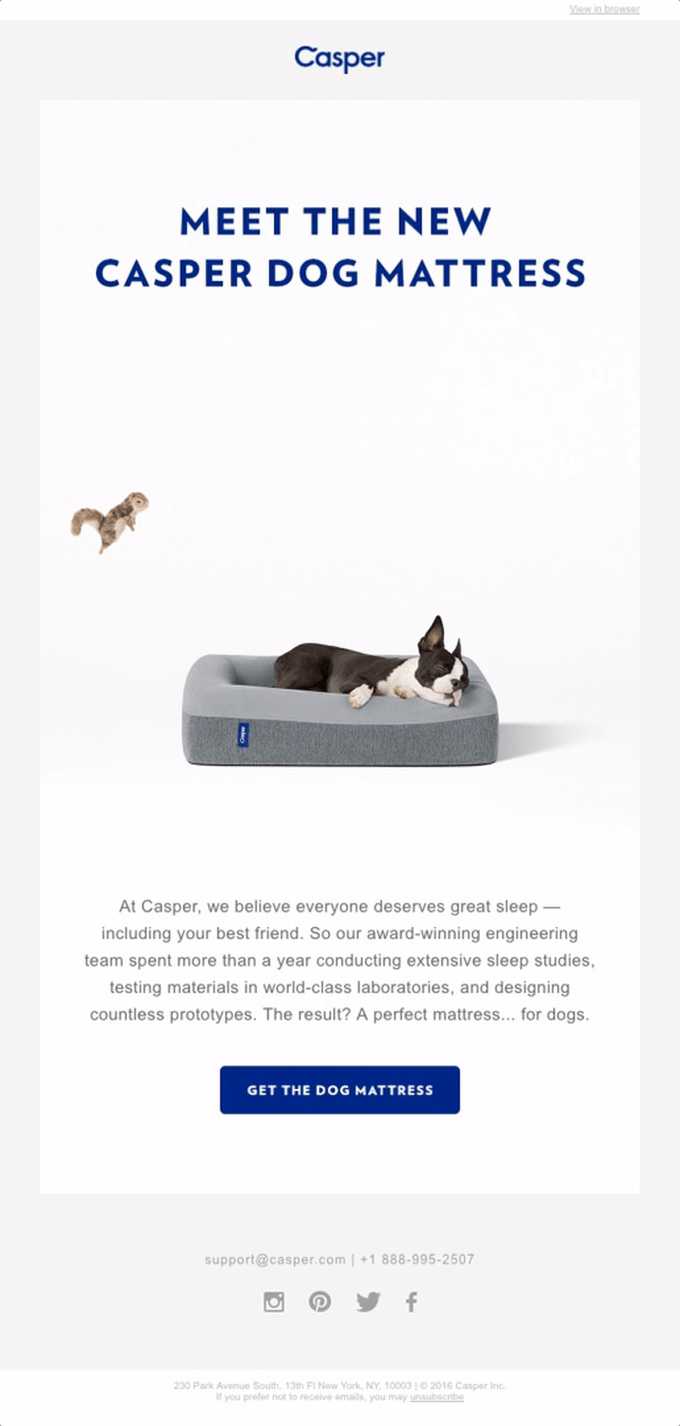
Sweeten The Deal — When your product first launches and you’re announcing it to your email list, it’s not a bad idea to offer a little something extra. Maybe you just offer a limited-time discount for people who take the leap, or maybe you offer some sort of bonus. You might also consider giving people a discount if they refer a friend who signs up. However you do it, sweetening the deal is a great way to build momentum and make sure that your product launch gets off on the right foot.

10. The Back-In-Stock Email

The back-in-stock email is simple but important. If a person has shown interest in purchasing a product that’s out of stock, this email alerts that person when that same product comes back in stock.
One study of an ecommerce company by MarketingSherpa found that the back-in-stock email had a surprisingly 22.45% conversion rate. In other words, 22.45% of the people who received the back-in-stock email, purchased.
Imagine, then, how many sales your company might sacrifice by not utilizing an effective back-in-stock email campaign?
But that’s the problem… what makes a back-in-stock email effective?
Here are a few best practices.
The Back-In-Stock Email Best Practices
Make Sure To Collect Email Addresses — Before you can send personalized back-in-stock emails, you need to capture the email address of the person who’s interested in a given product, whether that person’s already on your email list or not. Usually, this is as simple as adding an opt-in form that says something like, “Oh no! That product it out of stock right now… want us to notify you once it’s back?” This is also a nifty way to capture new email addresses from people who’ve never purchased before.

Only Have ONE Main Goal — Remember, with your back-in-stock email, there is really only one goal: to get the person to buy the product that they already said they were interested in. It’s easy to get side-tracked with any email campaign, tossing in other special offers and reminding the customer about other products you have… but that can actually confuse the person more than it helps them make a decision. So stick with one CTA and promote other products in future emails.
Make It About a Specific Product — When you send a back-in-stock email, the email should promote the same exact product that the person previously showed interest in… it shouldn’t be a similar product or something that’s “close.” You’ll get the highest possible conversion rate when the product you’re promoting is the same product the person wanted.
11. The Post-Purchase Email

The first email you send after someone makes a purchase is usually a simple transactional email, like a digital receipt. As you can see in the above Casper email, they add a little extra flair by encouraging people to refer friends and earn rewards. The transactional email is a good time for that sort of promotion since this person is probably excited about your product after making a purchase.
Once you’ve sent a digital receipt for the customer’s purchase, you might also consider sending them tracking information or even asking for feedback after they’ve received the product — just make sure you give them plenty of time to actually try your product before you ask for a review.
Here are some best practices when it comes to sending post-purchase emails.
Post-Purchase Email Best Practices
Keep it (Mostly) Transactional — The first email you send after someone makes a purchase should be a digital receipt. But even a physical receipt sometimes has special promotions or announcements on it. So while you definitely have to do the transactional piece, don’t be afraid to add a little something extra, like other recommended products or a percentage off the shopper’s next purchase.
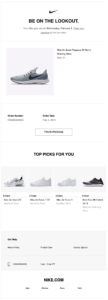
Send Tracking Information — It’s now pretty much an expected courtesy that when someone shops online, they’ll receive the shipping and tracking information within a day or two. If they don’t, then they might lose trust for your company or even try to call you directly to check on the status of their shipment. Sending the tracking information offers a simple, necessary courtesy to your customers and it cuts down on customer service requests.

Ask For Feedback — What better time or place to get honest feedback than when someone has spent their hard-earned money on your products? Be sure to send a simple survey, feedback-form, or star-rating email for people to rate your products after they’ve had enough time to try it out for themselves. Casper sells pillows, for example, and so they don’t send out their feedback request email until a few weeks after the customer has received their bedding. When you send your feedback request email will depend on what kind of product you sell and how long it takes customers to try it out.

12. The Review/Testimonial Email
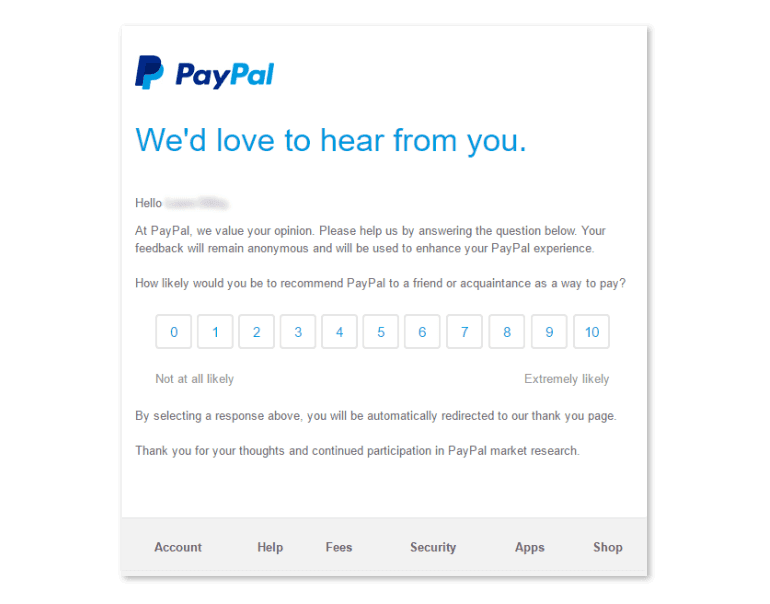
Your post-purchase email sequence isn’t the only time you might want to ask for feedback. You also might consider asking for reviews or sending out a survey during your on-boarding sequence or even quarterly throughout the year. This is an especially good idea if you own a services business and you want to get ongoing feedback from your customers.
Plus, the more testimonials you collect, the easier it’ll be to sell your product down the road!
When you ask your customers for a review or testimonial, here are some best practices to consider…
The Review/Testimonial Email Best Practices
Offer Two Feedback Options — To get as much response as possible, you might want to offer two different feedback options… one that’s easy and quick and one that’s a little bit longer. For example, you could offer a 1-10 star-rating system (this can also be known as a Net Promoter Score) for people to report the quality of their experience and you could also offer a 5-minute survey for people who have a little more time and/or want to go into more detail about their experience.
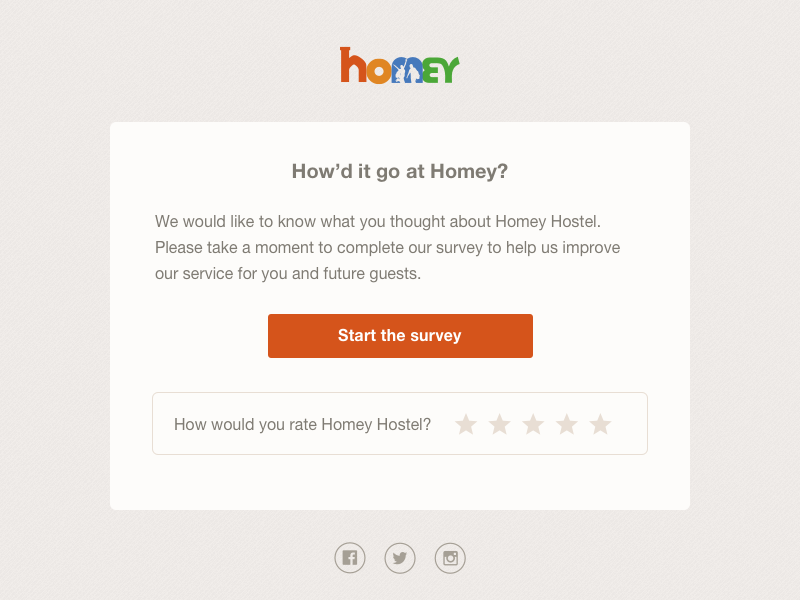
Tell People How Long It’ll Take — If someone goes to fill out your survey and it’s way longer than they were expecting, then they’re probably not going to stick around. So be upfront with people about how long it should take them to fill out the survey and, if possible, keep it under 5 minutes.

Encourage Honest Opinions — If you are proud of the product or service that you offer, then it should be a no-brainer to ask for people’s honest opinions. But if you’re tempted to try and persuade people to give you a good review, remember that doing so will probably push your customers away rather than drawing them closer. You want to communicate that you’re interested in their honest feedback… not that you just want a good review.

Conclusion
Now a question: what email do you need to master in order to grow your business, generate more leads, or make more sales?
Start by mastering the email that will have the biggest impact… then go from there.
Oh! And let us know if we missed any email type! What type of email has been the most impactful for your business’ growth? Reach out and follow us on Twitter.
